The Earth is composed of four distinct layers, each playing a crucial role in shaping the planet’s structure, geological activity, and environment. These layers interact dynamically, influencing tectonic movements, volcanic eruptions, and Earth’s magnetic field. Understanding the composition and behavior of these layers helps scientists predict earthquakes, locate valuable minerals, and study Earth’s internal heat flow. Below is a detailed breakdown of each layer.
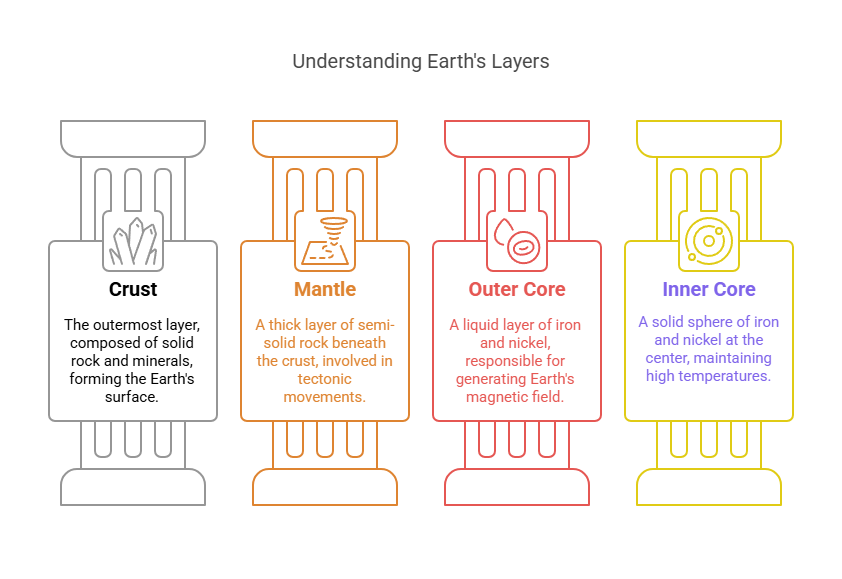
Crust
The crust is the Earth’s outermost layer, forming the solid surface where we live. Although it is the thinnest layer, it is essential in supporting life, maintaining the planet’s landscape, and acting as a foundation for human activity. It consists of various rock types, including granite and basalt, and is broken into tectonic plates that move over time, causing geological activity such as earthquakes and mountain formation.
Properties of the Crust
- The outermost layer of the Earth, composed of solid rock.
- Divided into continental crust (thicker, composed mostly of granite) and oceanic crust (thinner, composed mainly of basalt).
- The crust is broken into tectonic plates that float on the semi-fluid mantle.
- The thickness of the crust varies, ranging from 5 km beneath oceans to 70 km beneath continents.
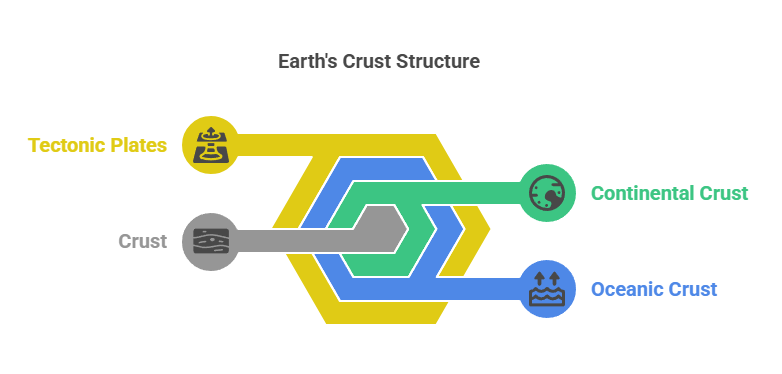
Mantle
The mantle lies beneath the crust and extends deep into the Earth. It is the thickest layer, making up about 84% of Earth’s volume. This layer is crucial for tectonic plate movement, volcanic activity, and heat transfer within the Earth. The upper mantle contains the asthenosphere, a partially molten layer that allows tectonic plates to move. The mantle’s convection currents drive geological processes that shape Earth’s surface over millions of years.
Properties of the Mantle
- Located beneath the crust, extending about 2,900 km (1,800 miles) deep.
- Composed mainly of silicate minerals rich in iron and magnesium.
- The upper mantle includes the asthenosphere, a semi-fluid layer that allows tectonic plates to move.
- Convection currents in the mantle drive plate tectonics, leading to earthquakes, volcanic activity, and mountain formation.
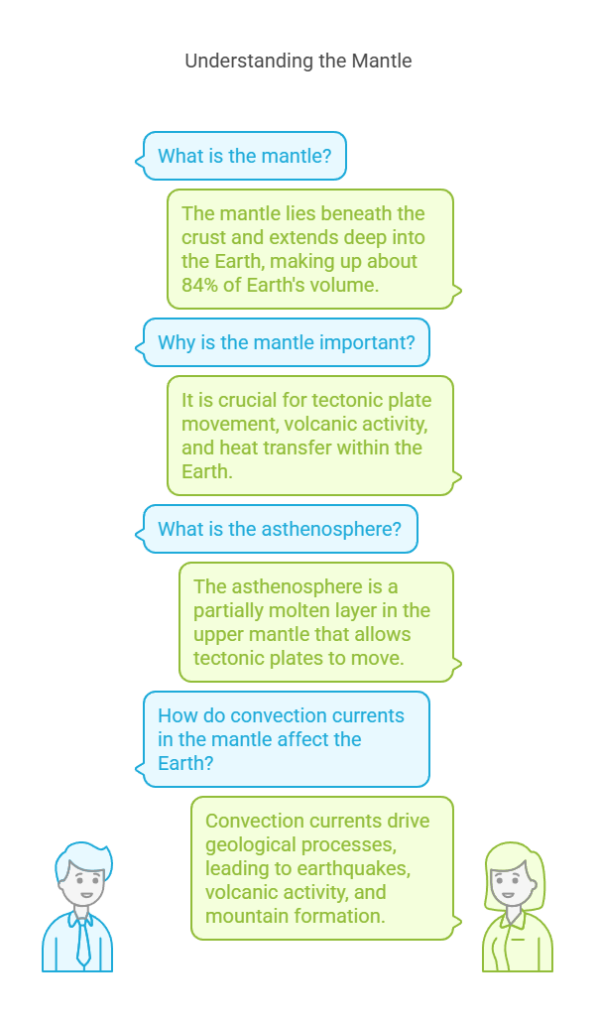
Outer Core
The outer core is a liquid layer beneath the mantle, consisting mainly of molten iron and nickel. This layer is essential for generating Earth’s magnetic field, which protects us from harmful solar radiation. The movement of molten metals in this layer creates electrical currents that maintain the geomagnetic field, influencing navigation systems, animal migration, and climate regulation.
Properties of the Outer Core
- A liquid layer composed mostly of molten iron and nickel.
- Located beneath the mantle, extending from 2,900 km to 5,150 km deep.
- The movement of molten metals generates Earth’s magnetic field, shielding the planet from solar winds and cosmic radiation.
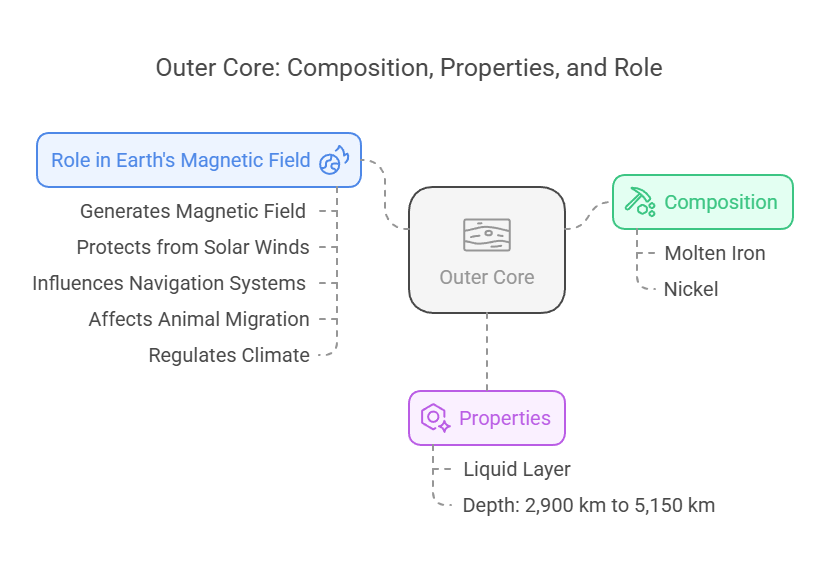
Inner Core
At the center of the Earth lies the inner core, a solid sphere composed of iron and nickel. Despite reaching extreme temperatures (up to 5,700°C or 10,300°F), the immense pressure keeps it solid rather than melting. This core plays a vital role in sustaining Earth’s magnetic field, interacting with the liquid outer core to create a protective shield around the planet.
Properties of the Inner Core
- A solid sphere composed primarily of iron and nickel.
- Extremely hot, with temperatures reaching 5,700°C (10,300°F), nearly as hot as the surface of the Sun.
- Despite high temperatures, it remains solid due to immense pressure.
- The solid inner core helps sustain Earth’s magnetic field through interactions with the outer core.
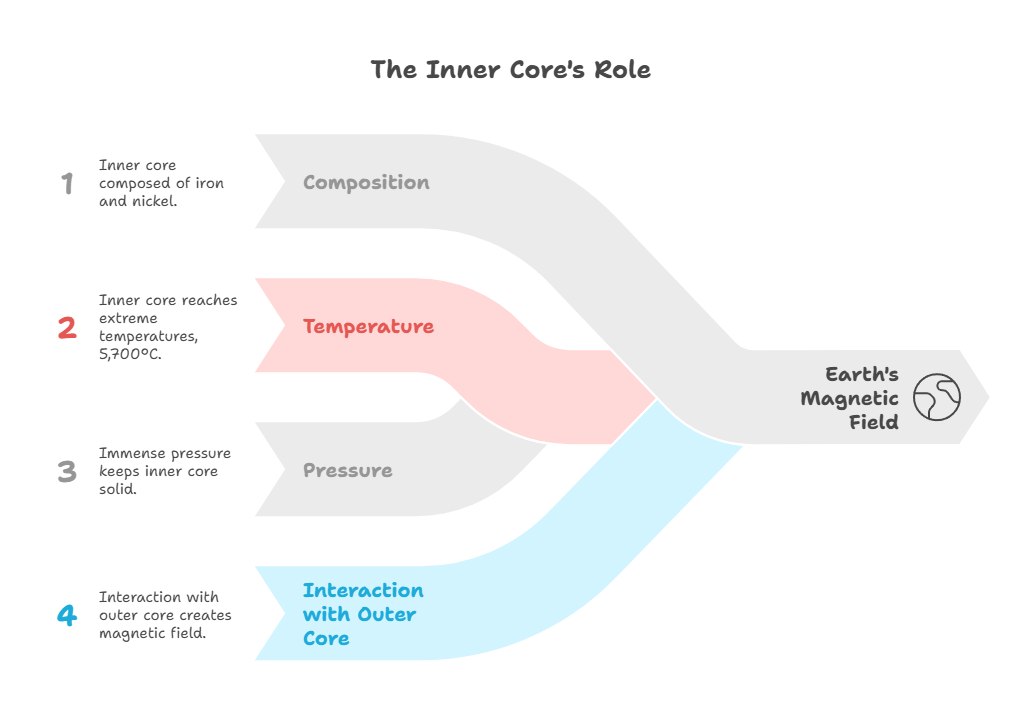
Why Understanding Earth’s Layers Is Important
Each of Earth’s layers has a unique role in shaping our planet’s geology, climate, and natural resources. Understanding these layers is essential for:
- Earthquake Studies: Helps scientists predict seismic activity and mitigate natural disasters.
- Volcanoes and Tectonic Activity: The movement of molten rock in the mantle influences volcanic eruptions and the formation of mountains.
- Magnetic Shield: The outer core’s movement generates Earth’s magnetic field, which protects us from solar winds and cosmic radiation.
- Resource Extraction: Many valuable minerals and fossil fuels originate from deep within Earth’s layers, making geology essential for mining and energy industries.

